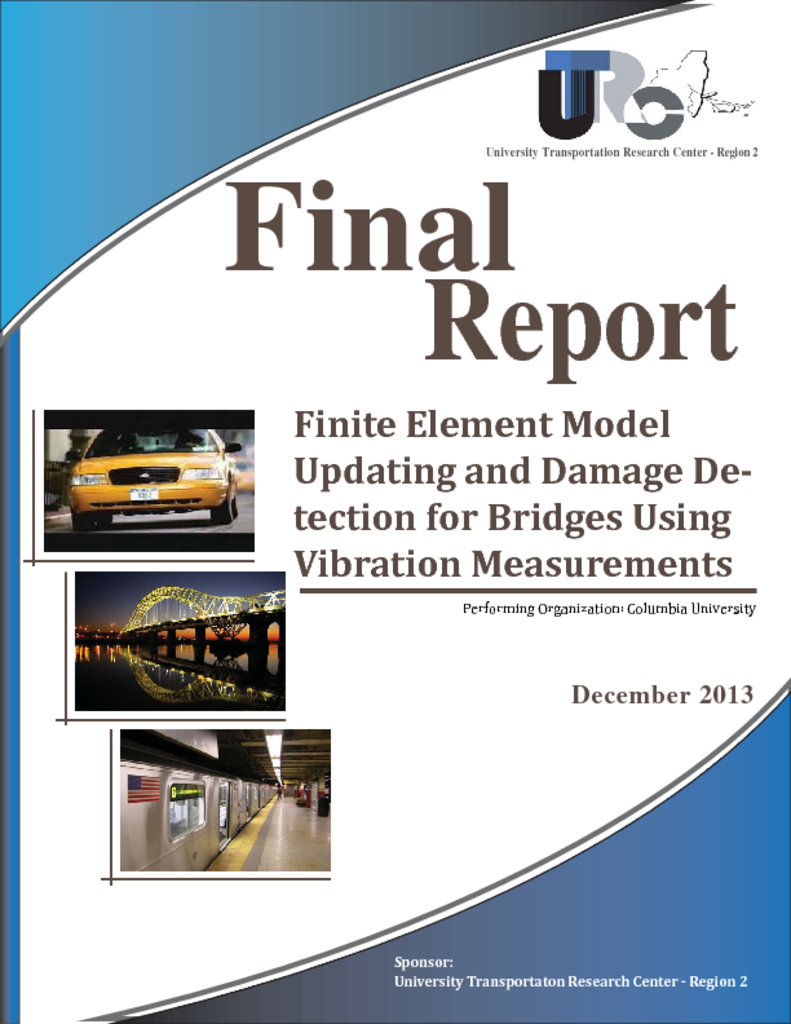In this report, the results of a study on developing a damage detection methodology based on Statistical Pattern Recognition are presented. This methodology uses a new damage sensitive feature developed in this study that relies entirely on modal characteristics, i.e. natural frequencies and mode shapes, directly identified from measurements of the structural response. A procedure for training the damage detection methodology to account for variability induced by operational conditions, i.e. temperature, traffic, wind, etc., has been proposed to determine boundaries of variability of the cumulative distribution functions of the various features. Two different test setups have been considered: 1) a full set of sensors, and 2) a limited number of sensors. The results show that this methodology has been proven successful in detecting the occurrence of damage and, in the case of full sensor setup, also in accurately locating the element where damage has occurred and the amount of element stiffness reduction. In the case of a limited instrumentation setup, the proposed methodology is successful in identifying the occurrence of damage, and even though it loses accuracy in pinpointing the exact damage location, it still successfully identifies the region containing the damaged element. In conclusion, the results obtained using the proposed SPDSF are promising and allow for damage identification, localization and estimation. The next step will be to use the same damage detection algorithm but relying only on measurement data of the structural response (output-only). Preliminary results conducted as a part of this study show that using non mass-normalized mode shapes, as usually obtained from output-only identification algorithm, can generate misleading results. The key point will be the determination of the mass normalizing factors of a mode shape matrix identified via output-only system identification algorithms. Also, the development and application of mode shape expansion techniques to obtain the complete mass normalized mode shape matrix in the situation of limited instrumentation will constitute a part of future study.


